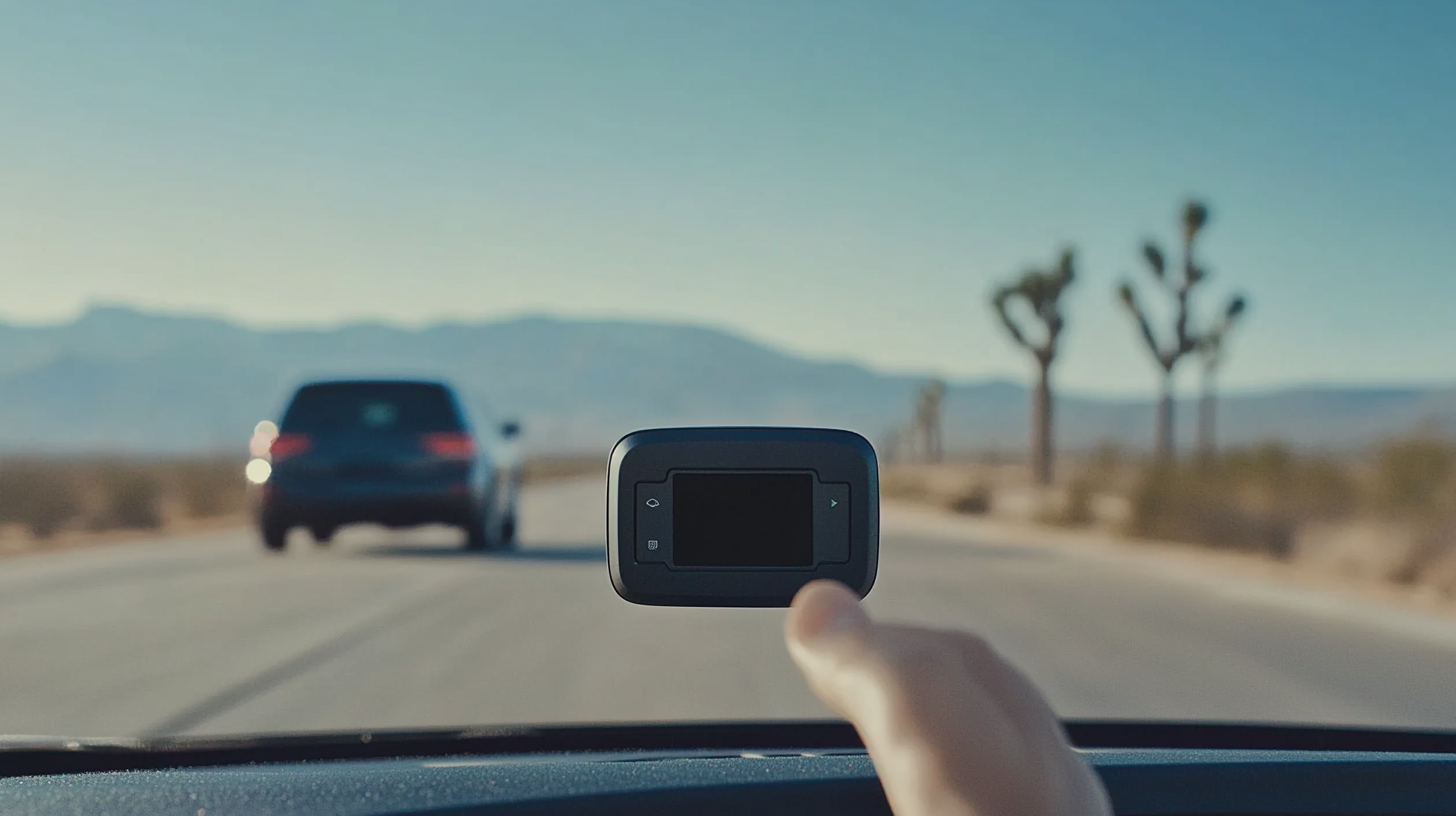Leave Your Message
In an era where technology continuously transforms our driving experiences, the integration of advanced safety features is more crucial than ever. One notable innovation gaining traction among global buyers is the Wireless Rearview Camera. This state-of-the-art device not only enhances visibility but also significantly improves maneuverability, ensuring a safer driving environment for all. As vehicle manufacturers embrace this technology, it's vital for consumers to understand the numerous advantages that Wireless Rearview Cameras bring to the table.
For drivers navigating busy urban landscapes or tight parking lots, the Wireless Rearview Camera offers a practical solution to common challenges. By eliminating the clutter of traditional wiring and providing real-time footage of the vehicle's rear, these cameras enhance awareness and reduce blind spots. Additionally, their ease of installation and user-friendly interfaces make them an attractive option for both seasoned drivers and novices alike. This blog will explore these benefits in depth, shedding light on why adopting a Wireless Rearview Camera is a smart choice for car owners around the world.

Wireless rearview cameras have revolutionized the way drivers navigate and reverse their vehicles, integrating advanced technology for enhanced safety and convenience. At the core of this innovation is a combination of high-definition cameras and reliable wireless transmission systems. Unlike traditional wired systems that rely on physical connections, wireless cameras use radio frequency (RF) transmission or Wi-Fi signals to relay images to a monitor inside the vehicle. This eliminates the need for complex wiring and makes installation simpler and more cost-effective. The technology behind wireless rearview cameras often includes features like night vision and wide-angle lenses, allowing for a broader view of the surroundings, even in low-light conditions. The use of digital signal processing enhances image clarity, providing drivers with a clearer picture of any obstacles or pedestrians behind them. Additionally, many systems now include built-in sensors that can alert drivers to potential hazards, further increasing safety while reversing. With ongoing advancements, wireless rearview cameras are becoming more sophisticated, integrating with other smart technologies in vehicles, such as GPS and parking assist systems. Moreover, the wireless aspect not only contributes to ease of installation but also facilitates flexibility in camera placement. Drivers can mount the camera in various positions without the constraints of cables. This adaptability makes wireless rearview cameras an appealing option for a variety of vehicle types, catering to global buyers seeking practical and innovative solutions for everyday driving challenges. As more consumers recognize the benefits of this technology, the market for wireless rearview cameras continues to grow, making them an essential tool for modern vehicles.

Wireless rearview cameras are increasingly gaining popularity among everyday drivers, offering a range of advantages that enhance the driving experience. One of the primary benefits is the ease of installation. Unlike wired systems that often require professional installation and complicated setups, wireless rearview cameras can be effortlessly mounted and connected, making them an ideal choice for those looking to upgrade their vehicle's safety features without the hassle.
In addition to straightforward installation, wireless rearview cameras stand out for their versatility. They can be easily transferred between vehicles, making them a practical option for families or individuals with multiple cars. This adaptability ensures that users can maintain high safety standards regardless of which vehicle they choose to drive. Furthermore, with the incorporation of advanced technology, many wireless cameras now offer superior image quality and features like night vision, helping drivers to navigate safely, even in low-light conditions.
Another key aspect is the enhanced safety that wireless rearview cameras provide. By offering a clear view of the environment behind the vehicle, these systems help prevent accidents and facilitate safer parking maneuvers. For drivers who frequently face tight spots or reverse frequently, a quality rearview camera can be a game-changer, allowing for a more relaxed and confident driving experience. Whether you're on a daily commute or embarking on adventurous trips, investing in a wireless rearview camera can significantly improve your overall road safety and driving comfort.

When it comes to enhancing vehicle safety, rearview cameras have become an essential feature for many drivers. The choice between wireless and wired rearview camera systems has garnered significant attention in recent years. Wireless rearview cameras, like the Auto-Vox CS2 Backup Camera, offer a flexible installation process, making them a popular choice among global buyers. With a compact 4.3-inch screen, users can conveniently view their surroundings without the hassle of complex wiring.
Wired rearview camera systems, while often more reliable due to their stable connections, can be cumbersome to install. They require drilling and running cables through the vehicle, which can be time-consuming and may need professional assistance. In contrast, wireless systems eliminate these issues, allowing users to set up their backup cameras quickly and with minimal tools. This ease of installation is particularly advantageous for buyers looking to improve their vehicle's safety without undergoing extensive modifications.
Furthermore, wireless systems typically come equipped with modern technology features such as better image resolution and night vision capabilities. These enhancements provide drivers with clear visibility of their surroundings, whether reversing in daylight or low-light conditions. As technology advances, the growing trend toward wireless solutions in rearview cameras illustrates how convenience and performance can go hand-in-hand, making them an appealing option for motorists everywhere.

When considering the purchase of a wireless rearview camera, several factors come into play that can greatly influence your decision. First and foremost is the image quality. Look for cameras with high-resolution capabilities to ensure clear visibility while reversing. The clarity of the feed can make a significant difference, especially in low-light conditions. Recent models, such as those from AUTO-VOX and Garmin, have set high standards with their excellent image outputs, making them ideal choices for upgrading older vehicles.
Another critical factor is the ease of installation. Wireless backup cameras should be designed for hassle-free setups that do not require extensive tools or professional assistance. Many cameras now come with detailed instructions and all necessary mounting hardware, enabling users to install them within minutes. Additionally, ensure that the wireless range meets your vehicle’s specifications to maintain a stable connection while driving.
Lastly, consider the additional features that some models offer, such as parking guidelines or night vision capabilities. These features enhance the usability of the camera and promote safer driving experiences. Investing in a backup camera equipped with advanced functionalities can provide an added layer of security on the road, significantly reducing the chances of accidents and fender benders. As you explore your options, remember that selecting the right wireless rearview camera involves balancing quality, installation ease, and enhanced safety features.
The integration of wireless rearview cameras in vehicles has significantly transformed the driving experience, offering enhanced safety and convenience for users globally. According to a recent report by MarketsandMarkets, the global wireless rearview camera market is projected to grow from USD 1.1 billion in 2020 to USD 3.2 billion by 2025, reflecting a compound annual growth rate (CAGR) of 23.0%. This trend underscores the increasing demand for advanced safety features in automobiles, particularly in urban environments where parking and reversing present notable challenges.
Real-world applications of wireless rearview cameras illustrate their effectiveness in various settings. For instance, a delivery service in the U.S. adopted these systems to improve their drivers' visibility while navigating congested city streets. By reducing blind spots, the company reported a 30% decrease in backing incidents, leading to safer operations and enhanced productivity. Moreover, manufacturers are leveraging wireless technology to improve camera resolution and connectivity, ensuring high-quality footage that aids drivers in tight spots, thus expanding the adoption of these systems across passenger and commercial vehicles alike.
Success stories from the automotive sector further indicate the role of wireless rearview cameras in building consumer confidence. A recent survey indicated that vehicles equipped with advanced safety features, such as wireless rearview cameras, experienced a 50% higher customer satisfaction rate compared to those without. This data highlights that combining technology with user-friendly interfaces not only enhances safety but also contributes to a positive driving experience, driving the market forward as customers seek vehicles that prioritize their safety and peace of mind on the road.
